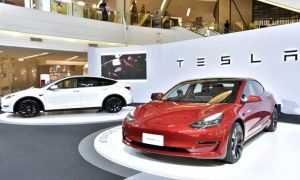The year 2022 was interesting for the auto industry. New car sticker prices were sent soaring due to chip and supply shortages for critical materials needed to build vehicles. In fact, prices were up 6.3% in 2022, according to J.P. Morgan. That sticker shock led to a huge increase in demand for used cars, with prices there also increasing 42.5% as of September.
There is good news on the horizon in 2023, however. J.P. Morgan estimates that prices for both new and used vehicles are set to decrease as supply chain issues abate and inflation is poised to keep easing. Per the financial firm, new vehicle prices are slated to go down 2.5-5% while used cars may go down by 10-20%.
Also Read– Economic Growth Report Boosts Equities
If you are thinking of trading in for a new vehicle or adding a new car to your family’s lineup, there is a key month to do your shopping — the month of May.
According to U.S. News & World Report, May is ideal because it’s when the winter and spring auto show seasons have stopped and new vehicles previously on display are coming to dealer showroom floors. As such, dealers need to get rid of “old” inventory and offer steep discounts to interested buyers who may not mind last year’s model. The end of May is also key since dealerships often offer Memorial Day deals ahead of summer.
The end of the year — October through December — can be a good time to do your car shopping, as well. October is when new vehicle models head to showroom floors and dealers want to unload existing inventory, while November latches on to Black Friday deals, including autos. Additionally, December is a time when salespeople are trying to meet year-end goals for sales and may be more willing to offer bargains to meet their benchmark.
As you prepare to get some new wheels, check out GOBankingRates’ guide to the dos and don’ts of buying a car.

































